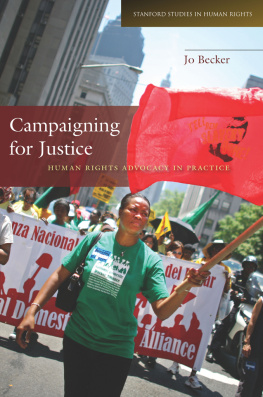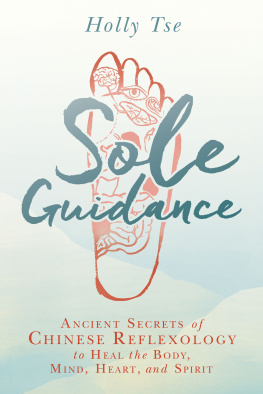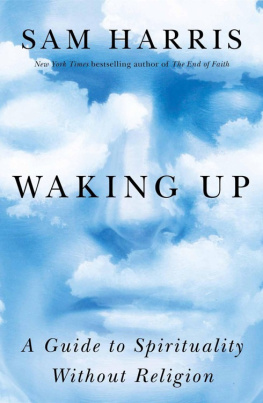I dedicate this book to my family, who tolerated my many absences so that I could complete this project: Alex for his patience, love, and impressive cooking; Alexa for her insights and skills; Alistair for his wit and medical worldviews; and Ella and Oliver for their affection, joy, and fun.
FOR INFORMATION:
SAGE Publications, Inc.
2455 Teller Road
Thousand Oaks, California 91320
E-mail: order@sagepub.com
SAGE Publications Ltd.
1 Olivers Yard
55 City Road
London EC1Y 1SP
United Kingdom
SAGE Publications India Pvt. Ltd.
B 1/I 1 Mohan Cooperative Industrial Area
Mathura Road, New Delhi 110 044
India
SAGE Publications Asia-Pacific Pte. Ltd.
3 Church Street
#10-04 Samsung Hub
Singapore 049483
Copyright 2018 by SAGE Publications, Inc.
All rights reserved. No part of this book may be reproduced or utilized in any form or by any means, electronic or mechanical, including photocopying, recording, or by any information storage and retrieval system, without permission in writing from the publisher.
All trademarks depicted within this book, including trademarks appearing as part of a screenshot, figure, or other image, are included solely for the purpose of illustration and are the property of their respective holders. The use of the trademarks in no way indicates any relationship with, or endorsement by, the holders of said trademarks.
Printed in the United States of America
Library of Congress Cataloging-in-Publication Data
Names: Nelson-Becker, Holly, author.
Title: Spirituality, Religion, and Aging: Illuminations for Therapeutic Practice Holly Nelson-Becker, Loyola University of Chicago.
Description: Thousand Oaks : Sage, [2017] | Includes bibliographical references and index.
Identifiers: LCCN 2016040646 | ISBN 9781412981361 (pbk. : alk. paper)
Subjects: LCSH: Geriatric psychiatry. | Older peopleMental healthReligious aspects. | Psychiatry and religion.
Classification: LCC RC451.4.A5 N453 2017 | DDC 618.97/689dc23 LC record available at https://lccn.loc.gov/2016040646
This book is printed on acid-free paper.
Acquisitions Editor: Nathan Davidson
Editorial Assistant: Alissa Nance
Production Editor: Veronica Stapleton Hooper
Copy Editor: Diana Breti
Typesetter: C&M Digitals (P) Ltd.
Proofreader: Gretchen Treadwell
Indexer: Wendy Allex
Cover Designer: Glenn Vogel
Marketing Manager: Jenna Retana
Foreword
Susan H. McFadden
Starting in the 1960s, a few gerontologists began suggesting that it was time to stop treating religiousness and spirituality as taboo topics. They urged their colleagues to see that the aging process motivates many people to wrestle with questions about lifes meaning and purpose that have deep roots in the religions of the world. However, although the 1971 White House Conference on Aging produced an important document about spiritual well-being in later life, the majority of academic researchers and many practitioners paid little attention. Slowly, however, momentum built as more books and journal articles appeared and as professional organizations supported the formation of groups interested in research and practice that takes spirituality, religion, and aging seriously. As this book notes, toward the end of the 20th century, a variety of cultural factors converged to stimulate fresh thinking on the roles of religious beliefs, practices, and communities in older peoples lives as well as new insights into the many ways they experience and express spirituality.
I do not believe it is an exaggeration to say that Holly Nelson-Becker has written a book that represents a turning point in gerontology. Her work reflects contemporary postmodern assumptions about the intersectionality of various shaping influences on individual identity and it respects the many sources of diversity among peoples and cultures. At the same time, in every chapter, she shows how wisdom from the past can enlighten our thinking today. She also understands that research, theory, and practice related to religion, spirituality, and aging are shaped to some degree by their historical moment as well as peoples positions on the relation between science and religion.
From her standing ground in social work research and practice, Nelson-Becker reaches out to colleagues in psychology, nursing, pastoral care, art and music therapy, and other disciplines and professions that study aging and serve older adults. She values interdisciplinarity and transdisciplinarity, respectfully showing how persons with different perspectives from her own have historically viewed religion, spirituality, and aging. She uses the metaphor of leaping limits to address how people can get out of the silos that restrict them to a particular disciplinary language and assumptive world.
One criticism of much of the work from the previous century was that it treated religion generically and showed little understanding of the actual beliefs of adherents of different religions. Nelson-Becker corrects that problem by offering detailed descriptions of eight major religions, including the religions of indigenous Americans (recognizing, of course, that there is much diversity in this group). It is also impressive to see that she paints a differentiated portrait of spirituality, and accepts that some forms of spirituality have no theistic focus. Along with adding to their knowledge about specific religious beliefs and various forms of spirituality, Nelson-Becker urges mental health practitioners to be self-critical about their biases toward religiousness, particularly when they assume that devout people are rigid and judgmental. She also wants practitioners to understand that some older adults experience profound shifts in religiousness and/or spirituality, sometimes by leaving one tradition and turning to another, or by giving up previously held beliefs and practices altogether.
This book breaks new ground in many ways. For example, it frequently addresses the spiritual and religious challenges experienced by people who immigrate to the United States later in life to be near their adult children. With immigration such a contested political issue in our times, it is refreshing to see the compassionate approach taken in this book. She understands that many of these elderly immigrants feel helpless and hopeless and she offers suggestions about how practitioners might offer support and assistance. Whether writing about newly arrived immigrants, or Americans who have lived in one place their entire lives, Nelson-Becker lifts up the spiritual resonances of their everyday lives. For example, she pays attention to the meaning of home for older adults, including those journeying into dementia.














